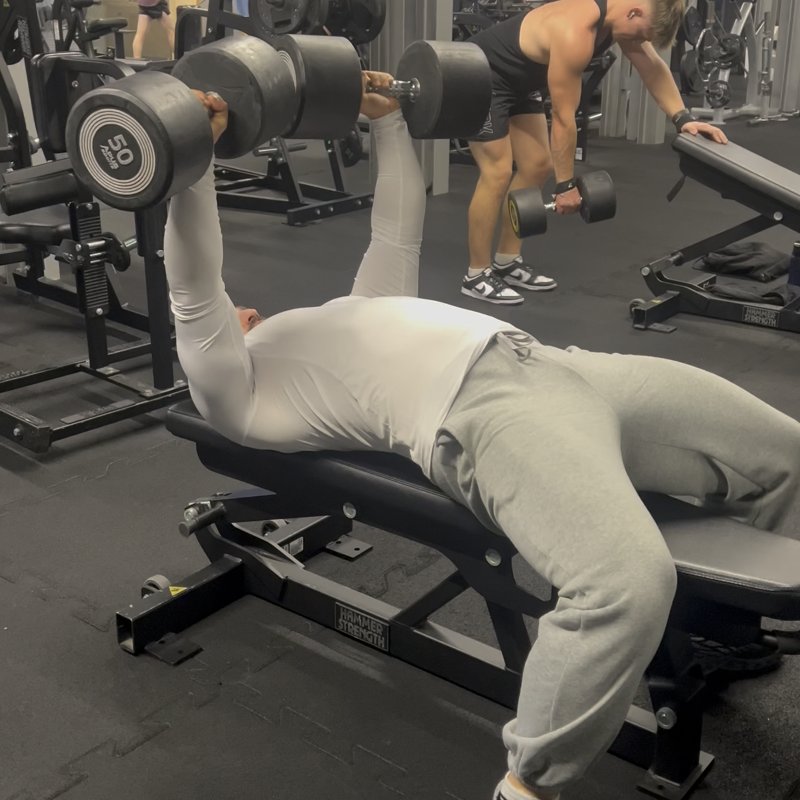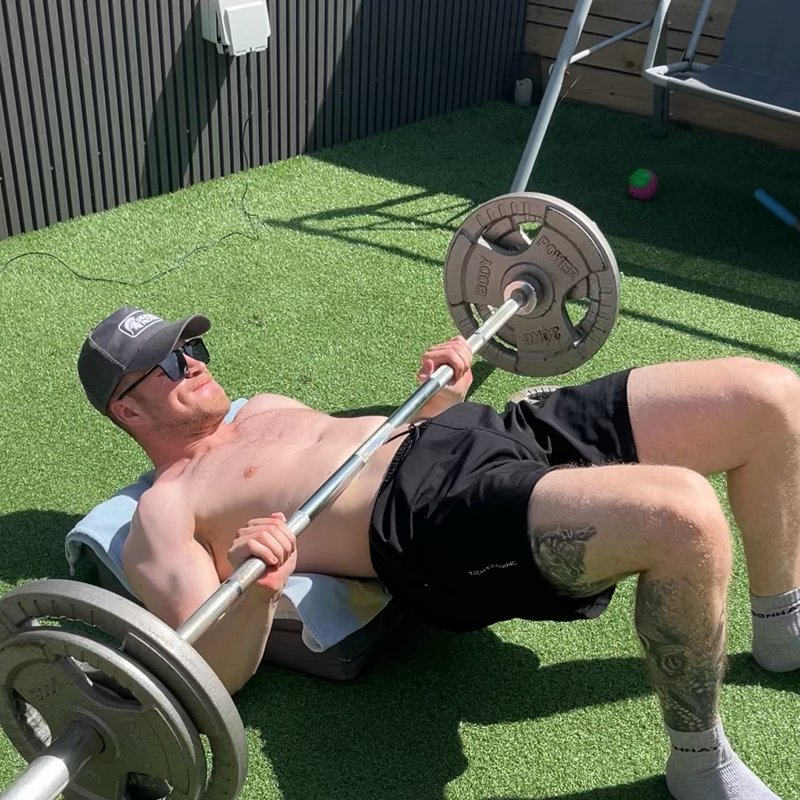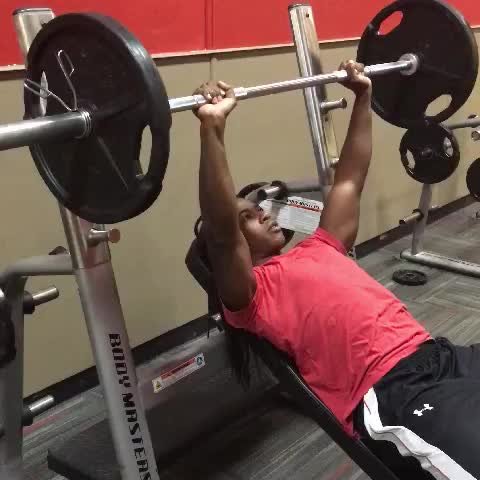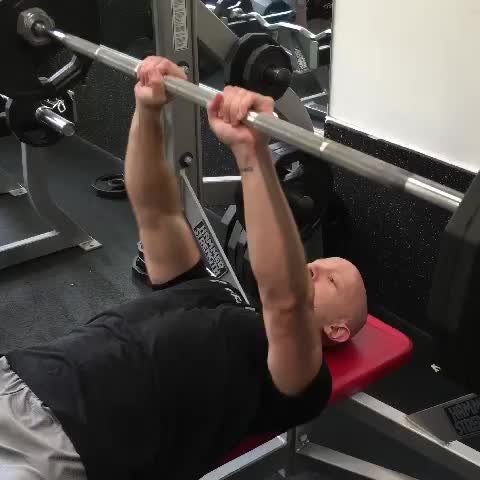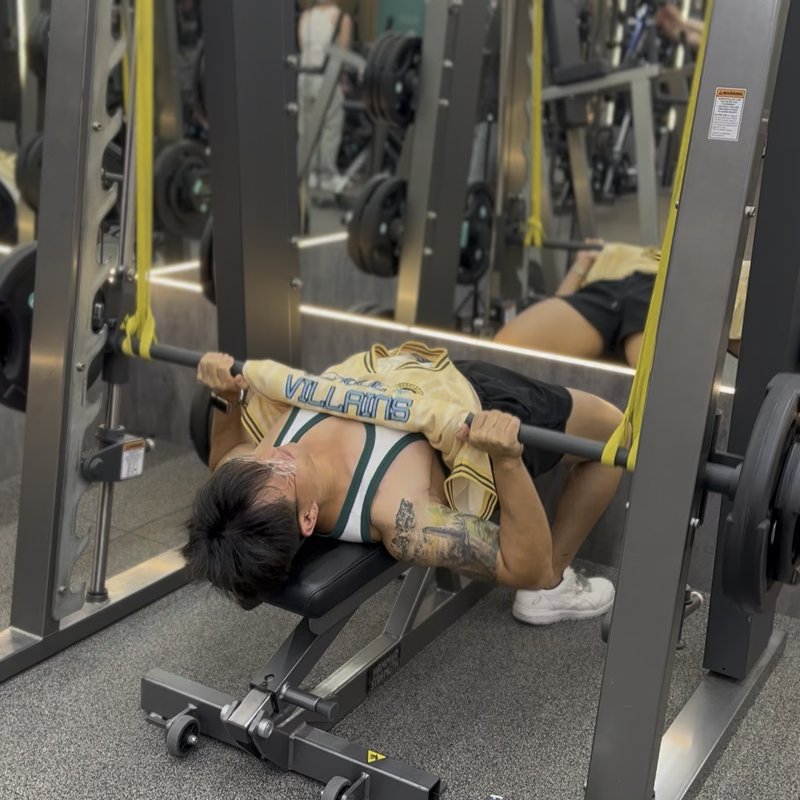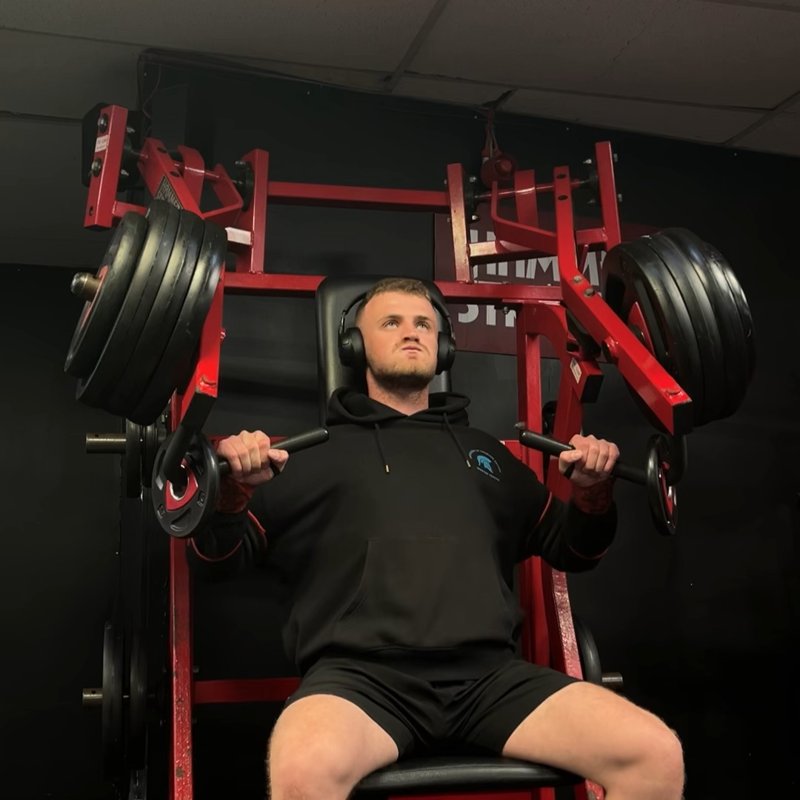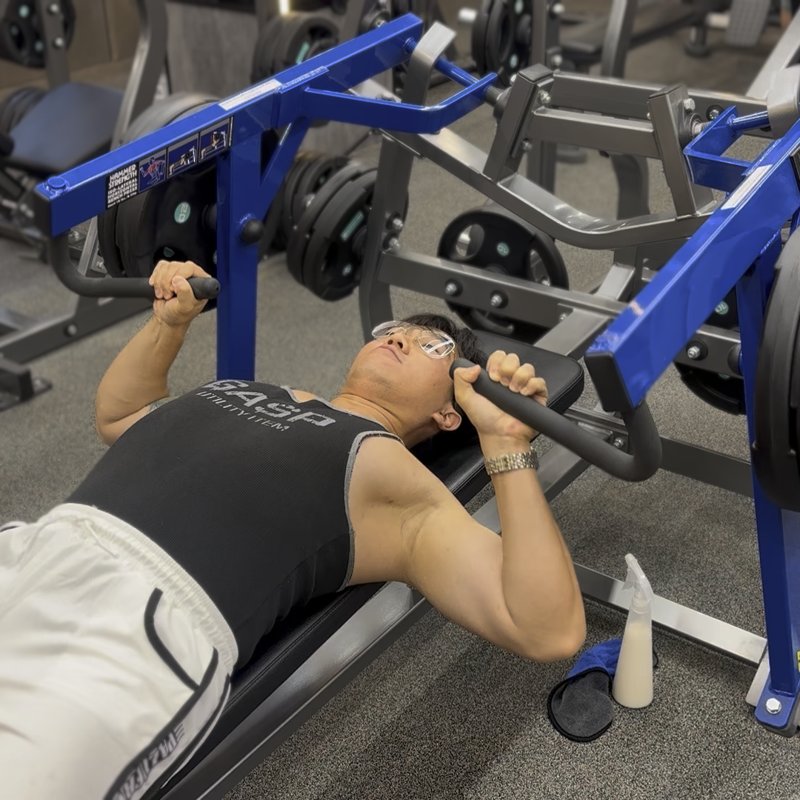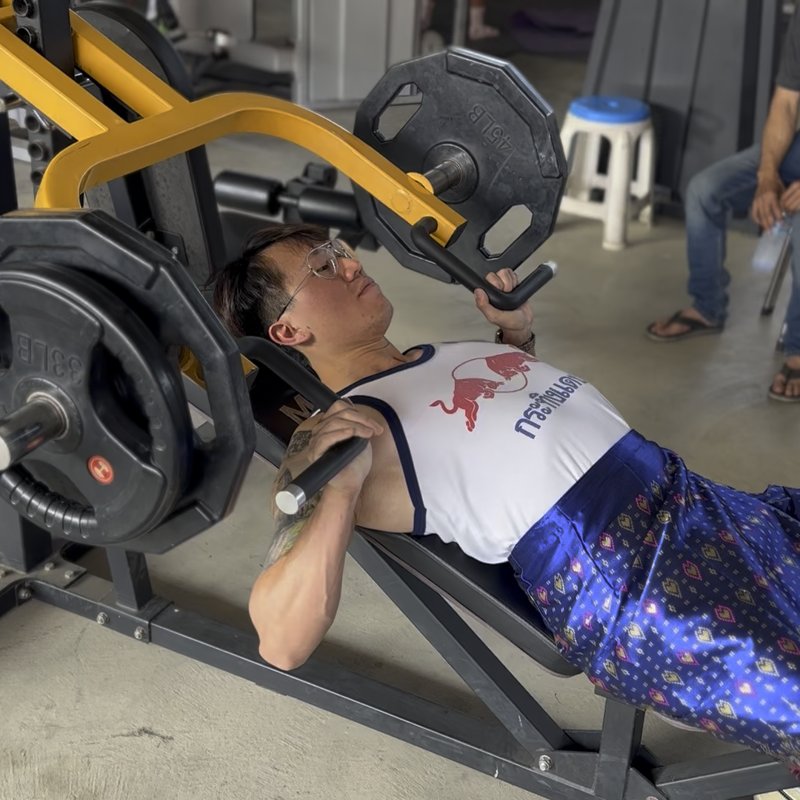Bench Press: The Ultimate Guide
The bench press stands as one of the most popular and effective upper body exercises in existence. This comprehensive guide covers proper form, common mistakes, and effective variations to help you maximize chest, shoulder, and tricep development.

Quick Facts
Key Benefit
Builds complete upper body pushing strength and impressive chest development
Primary Muscles
Anterior Deltoids, Pectoralis Major, Triceps
Secondary Muscles
Biceps, Lats, Pectoralis Minor
Equipment
Flat Bench, Barbell
Difficulty
Intermediate
Type
Strength, Hypertrophy
In This Guide
Ready to master the Bench Press?
Track your progress, see improvements over time, and build strength consistently.
Download GravitusAre you ready to master the Bench Press? This comprehensive guide will teach you everything you need to know about this iconic upper body exercise that builds serious chest, shoulder, and tricep strength. Whether you're a beginner just starting your fitness journey or an advanced lifter looking to perfect your form, this guide has you covered.
Why the Bench Press Is Worth Mastering
The Bench Press is more than just another chest exercise in your arsenal. It's a fundamental movement that:
Builds Complete Upper Body Strength
Targets multiple muscle groups simultaneously, making it one of the most efficient upper body exercises available.
Offers Measurable Progress
Provides a clear metric for tracking strength gains over time, making it excellent for goal setting.
Develops Functional Pushing Power
Strengthens the muscles used in countless everyday pushing activities and athletic movements.
Proper Bench Press Form: Step-by-Step
Starting Position
- Lie on the bench with your eyes directly under the barbell.
- Plant your feet firmly on the floor, slightly arch your back, and pull your shoulder blades together and down.
- Grip the bar with hands slightly wider than shoulder-width apart, with the bar sitting in the base of your palm rather than your fingers.
The Movement
- Take a deep breath, brace your core, and unrack the bar by straightening your arms.
- Slowly lower the bar to your mid-chest (around the nipple line), keeping your elbows at a 45-75 degree angle from your body.
- Touch the bar to your chest without bouncing, then exhale as you press the bar upward following a slightly diagonal path backward until your arms are fully extended.
Key Form Tips
Wrist Position
Keep wrists straight and stacked directly over elbows during the press.
Elbow Angle
Keep elbows at a 45-75 degree angle to your body, not flared out to 90 degrees.
Shoulder Blades
Keep shoulder blades pinched together and down throughout the movement.
Bar Path
Lower the bar to mid-chest and press up with a slight diagonal path back toward your face.
Chest Engagement
Focus on feeling tension in your chest muscles, especially during the lowering phase.
Foot Position
Keep feet firmly planted on the floor to generate stability and leg drive.
Muscles Worked in the Bench Press
Primary Muscles
- pectoralis major: The main chest muscle that provides the majority of the pushing power during the bench press, especially during the mid-range of the movement.
- anterior deltoids: The front part of the shoulder muscles work significantly in the bench press, especially in the top half of the range of motion.
- triceps: The three-headed muscle at the back of your arm that extends the elbow, particularly active in the lockout phase of the bench press.
Secondary Muscles
- pectoralis minor: A smaller chest muscle that assists in stabilizing the shoulder during the bench press. Located on the sides of the chest, this muscle helps maintain proper shoulder position and scapular stability.
- biceps: Acts as a stabilizer during the bench press, specifically when controlling the bar during the lowering phase.
- lats: The large back muscle helps maintain a stable base and proper shoulder position during the movement.
Common Mistakes and How to Avoid Them
Bouncing the bar off your chest
This reduces muscle engagement and can lead to injury. Control the eccentric portion and pause briefly at the bottom for proper muscle development and safety.
Lifting hips off the bench
This reduces chest engagement and can strain the lower back. Keep glutes in contact with the bench and focus on leg drive horizontally rather than vertically.
Flaring elbows too wide
Perpendicular elbows (90-degree angle to the body) can cause shoulder impingement. Keep elbows at a 45-75 degree angle to your torso for better shoulder health.
Inconsistent bar path
A random bar path reduces efficiency and strength. The optimal path is slightly diagonal, touching mid-chest and ending over the shoulders at lockout.
Bench Press Variations
Beginner-Friendly Variations
-
Dumbbell Bench Press
Uses dumbbells instead of a barbell, requiring more stabilization and allowing for a greater range of motion.
-
Floor Press
Performed lying on the floor, which limits range of motion and reduces shoulder stress while building lockout strength.
Intermediate Variations
-
Incline Bench Press
Angling the bench to around 30-45 degrees shifts emphasis to the upper chest and front deltoids.
-
Close-Grip Bench Press
Using a narrower grip (about shoulder-width) increases triceps activation while decreasing chest involvement.
Advanced Variations
-
Pause Bench Press
Pausing for 1-3 seconds at the bottom eliminates the stretch reflex and builds starting strength.
-
Board Press
Using wooden boards on the chest to limit range of motion and focus on lockout strength, popular in powerlifting training.
FAQs About the Bench Press
For most people, a grip width where your forearms are vertical when the bar touches your chest is optimal—typically 1.5-2 times shoulder width. A wider grip emphasizes chest more, while a narrower grip shifts focus to the triceps. Experiment to find what's most comfortable and effective for your body structure.
While a spotter is ideal for safety, you can bench press alone safely by using a power rack with safety pins set at the appropriate height, learning the "roll of shame" technique for failed reps, or using dumbbells instead. Never bench to failure when alone without safety measures in place.
Plateaus can be overcome by temporarily reducing volume and increasing frequency, incorporating variations like pause reps or close-grip bench, strengthening weak links (often triceps or upper back), improving technique, or cycling rep ranges for new stimuli. Sometimes, a deload week followed by a new program structure is the best solution.
Video Demonstrations
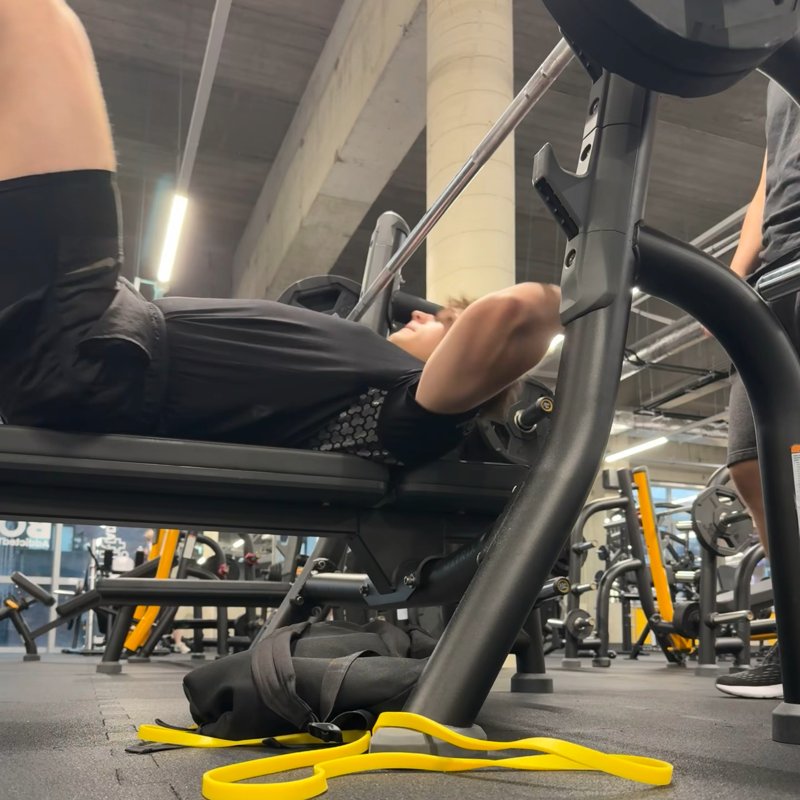
Log in to watch video demonstrations
Login to Watch3 video demonstrations available
Find more video demonstrations in the Gravitus app
Tips from the Community
-

Inhale at the top and hold it. Touch the bar to your chest. Exhale at about an inch or so off the chest. This keeps you from getting loose. Be sure to drive your knees out and take advantage of leg drive.
-

Touch the bar to your chest. Those with shoulder issues should bring the bar down to 2” above the chest.
-

Keep your ass on the bench
-

How to get better at Benching? Do more Benching, I tried close grip, slingshot, chains, bands, etc. the thing that got my bench the best was more Benching. I also had a lot of success with tempo pressing since I had an issue with just dropping the bar on my chest.
-

If you have shoulder issues, try and squeeze your scapula while forcing your shoulders towards your lower body (if that makes sense). Also see a physical therapist, experienced massage specialist and chiro. You can also roll your peck out with a lacrosse ball. Most of shoulder issues come from poor technique, poor posture, lazy warmup and no stretching - but mostly bad form.
Track your progress with Gravitus
Download Gravitus to log your workouts, track your progress, and join a community of fitness enthusiasts.

Helpful Resources
One Rep Max Calculator
Find your one rep max for any exercise without maximal testing. Essential for developing effective strength training programs.
Calculate 1RMWorkout Programs
Follow structured workout programs created by fitness professionals to maximize your strength and muscle gains.
View Programs